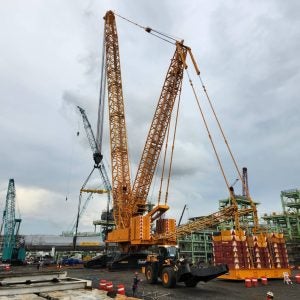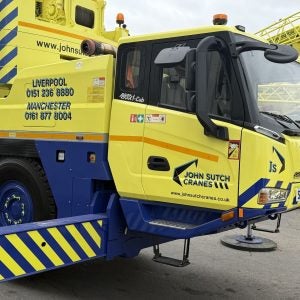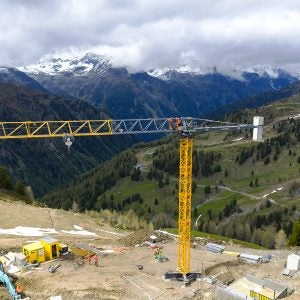The principle of a draw-wire displacement sensor is relatively straightforward, hence its inherent reliability. The sensor works rather like a tape measure, except with a draw-wire sensor, the user does not have to read off the measurement of the extended tape. The rotation of the drum on which the steel wire is wound is measured automatically. The drum itself incorporates a long-life spring drive, which ensures the steel wire is rewound.
Micro-Epsilon’s wireSENSOR range uses three main measurement methods: either a multi-turn potentiometer, an incremental encoder or an absolute encoder. One of these devices is mounted onto the drum axle, converting the rotary motion of the drum into a signal that can be evaluated. The measured displacement can be output as an analogue current, voltage or potentiometric signal. For a digital output, there is a choice of HTL or TTL, with interfaces for most of the common fieldbus systems, including CANopen, SSI and Profibus.
As with traditional tape measures, the wireSENSOR series is capable of measuring around corners and edges. Micro-Epsilon supplies as accessories deflection pulleys, which deflect the steel wire in the desired direction.
Customers of Micro-Epsilon draw-wire sensors are not restricted by measurement range either. The sensors cover a measuring range from 50mm right up to 50m. Options are available for harsh environments too, with an IP67 version available.
Micro-Epsilon’s draw-wire sensors normally come with a plastic housing, however, for more arduous applications, an aluminium housing is provided. Accessories for the sensors include brackets, wire extensions, deflection pulleys and various magnetic holders for the sensor and wire.
The draw-wire mechanism is also available separately with an adaptor for the customer’s own encoder. In this way, companies who have their own appropriate encoder technology, but do not manufacture their own draw-wire sensors, can offer their customers a suitable complete solution.
Applications are many and varied. In the medical industry, draw-wire displacement sensors are being used on CT scanner machines, X-Ray systems, medical bath tubes, ambulance stretchers, dentist chairs, wheelchairs and rehabilitation equipment.
In the automotive sector, applications include crash test dummies, vehicle suspension systems, engine vibration and pedal position. Garbage trucks, forklift trucks and mobile safe working platforms, also use draw-wire sensors.
Companies in the aerospace industry are using draw-wire sensors to check landing gear, wing structure and simulator positioning. Manufacturers of industrial presses, saws, foil welding machines and gluing machines are also using Micro-Epsilon’s wireSENSOR.
Micro-Epsilon drawwire displacement sensor range Micro-Epsilon drawwire displacement sensor range






